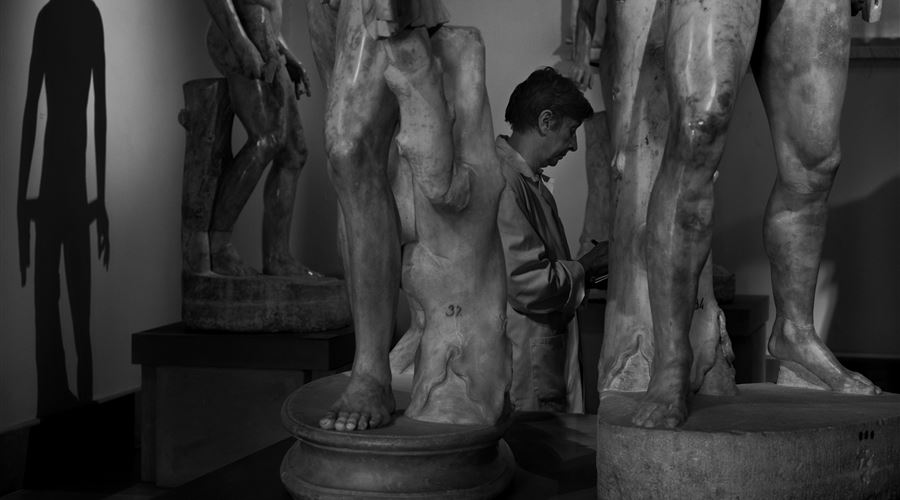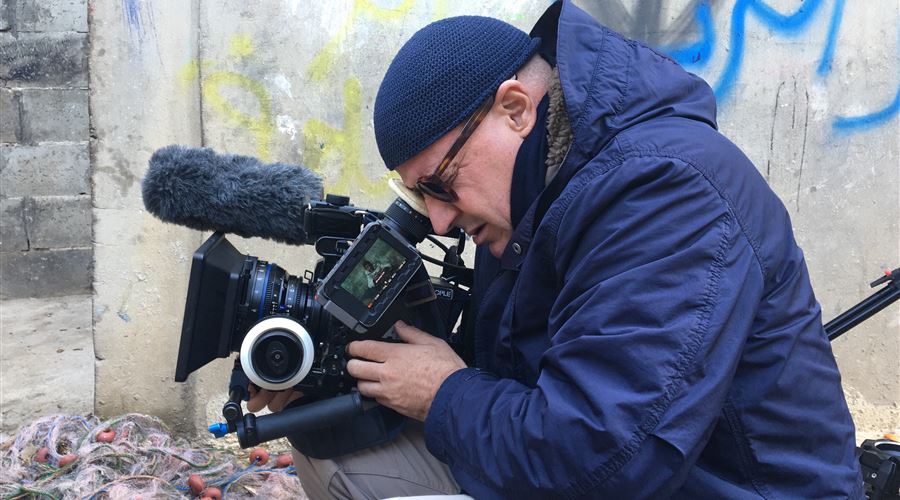BELOW THE CLOUDS by Gianfranco Rosi
Between Vesuvius and the Gulf of Naples, the land quakes from time to time, and the fumaroles of the Phlegraean Fields taint the air. The ruins that lie below — Pompeii, Herculaneum, long-submerged Roman villas — tell of a future that was buried by time. From these traces of history, memories of the subterranean world, in black and white, a lesser-known Naples emerges and fills with lives.
Below the clouds lies a territory criss-crossed by inhabitants, worshippers, tourists and archaeologists excavating the past — and by those who, in museums, strive to give new life and meaning to statues, fragments and ruins. The train that rings Vesuvius makes its rounds as racehorses train along the shore. A teacher runs a makeshift after-school for children and adolescents. Firefighters in their command centre try to calm the fears of locals who call in; law enforcement pursue tomb robbers, while in Torre Annunziata, Syrian tankers unload Ukrainian grain.
A team of Japanese archaeologists continue their twenty-year excavation of Villa Augustea, extracting history from seeds, bones and layers of sediment. Tourists wander the ruins of Pompeii, and worshippers prostrate themselves at the church of the Madonna dell’Arco, where the crypts and ex-votos attest to the belief of a world that has survived. The land that skirts the Gulf is a vast time machine.

